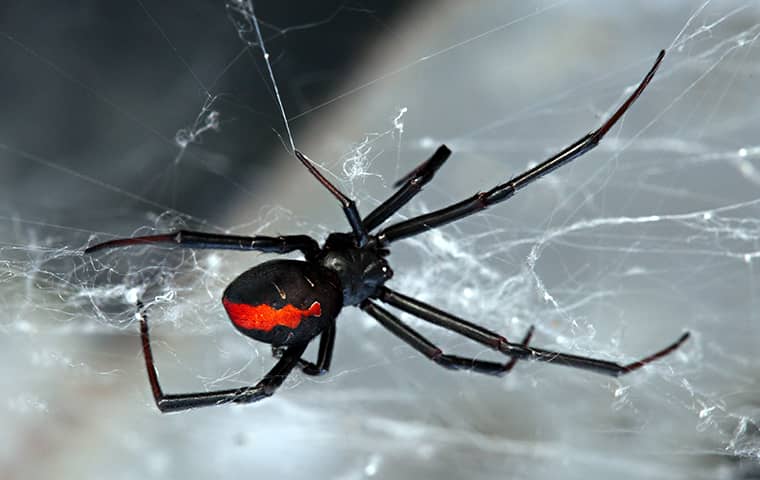Some experts estimate that there are over 3,500 spider species in the United States. Fortunately, only a small number are considered to be dangerous. They fall into two categories: widow spider species and brown recluse spider species. Here is a quick guide for these two spider types.

Identification
It is important to know what these spiders look like. Recognizing a threat around, or inside, your Las Vegas home can help you protect yourself. Spider identification can be difficult because these spider species vary in appearance and you may see a juvenile spider which will be smaller and not yet fully developed. Keep this in mind.
Widow Spiders
In our area, we have black widows and brown widows. These are hairless spiders with large, bulbous abdomens. Often, an hourglass marking can be seen on the bottom of the abdomen, but not always. Some species just have red dots. Some have other colored dots. The hourglass marking of a black widow will be red, but it will be orange on a brown widow. If you see a spider you think might be a widow, take a photo of it and have a licensed pest control professional identify it.
Brown Recluse
These spiders are very reclusive and it is rare to see them. If you do see one, you need to have good eyesight to see the brown violin symbol on its back. Brown recluse spiders are about the size of a quarter. Keep in mind that these are hairless spiders with a sickly brown color. In some lighting, they may even appear to look a light-green color. It depends on the species.
Reduce Spider Activity Around Your Home
There are reasons these spiders come into your yard. If you remove the attractants, you can reduce spider activity.
Food
These spiders mostly eat crawling insects. They’re even known to take down mice. If you have bugs or mice around your home, they will lure dangerous spiders to your home. You can reduce pest activity by keeping your foundation perimeter as dry as possible and be reducing the food bugs eat.
Water
Any conditions that allow puddles to form or moisture to accumulate will make your foundation perimeter ideal for these spiders.
Harborage
Spiders hide in yard clutter. If you have items in your yard that don’t need to be out there, consider storing them inside. Dangerous spiders are prone to hide in organic material so be sure to keep your yard raked.
Seal Entry Points
These two spider types will most likely get into your home through low entry points. Here are a few common entry points they use:
- Damaged screens and broken window panes
- Damaged weather-stripping
- Missing door sweeps
- Cracks in foundation walls
- Gaps around pipes and wire conduit
- Damaged seals on garage doors
- Holes created by wood-damaging pests
- Unprotected weep holes
Interior Protection
If these spiders get into your home, they are likely to stay in secluded locations. But keep in mind that they might crawl around your home at night while you’re sleeping, or during the day while you’re away.
Here are some tips to prevent bites:
- Remove skirts from beds.
- Make sure covers don’t touch the ground.
- Shake shoes, clothing, towels, and other items before using them.
- Turn your bedding down before getting into bed.
- Be cautious when getting items out of storage.
Pest Control
A good pest control program can help to reduce bugs around your home, removing them as a food source for dangerous spiders. Routine pest control treatments remove spider webs near your home and apply a barrier that repels and eliminates pests. And having a residential pest control plan gives you access to a pest control professional who can identify dangerous spiders and employ trusted methods to remove them from your home.
Do you live in Las Vegas? Reach out to Evolve Pest Control to establish a pest control plan for your home in Vegas or the surrounding area and protect yourself from dangerous spiders and other dangerous pests. You’ll be glad you did.

